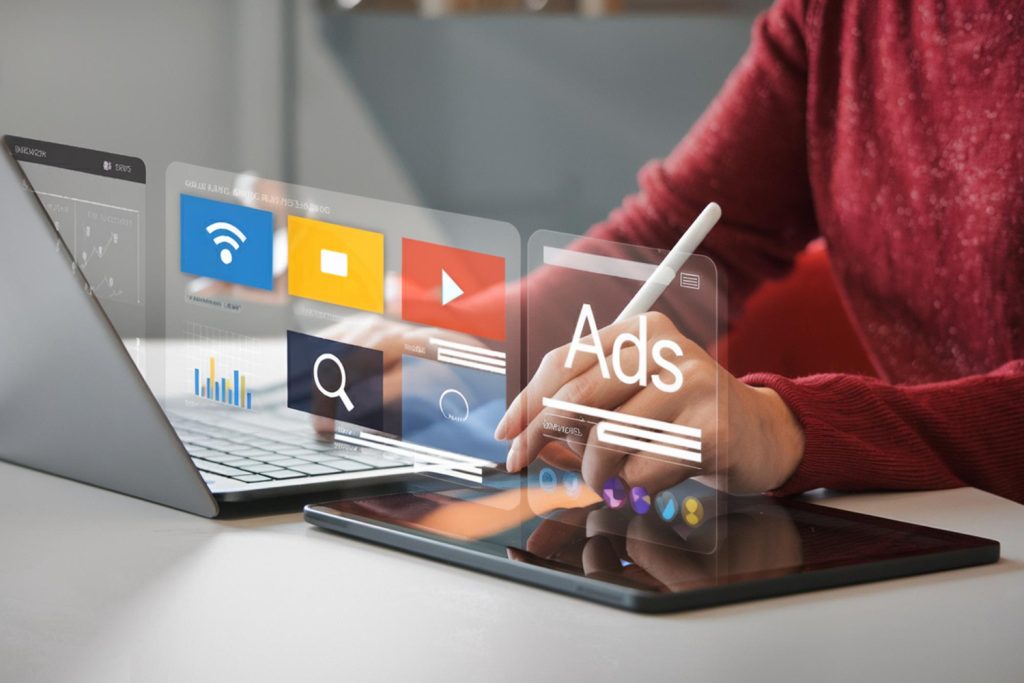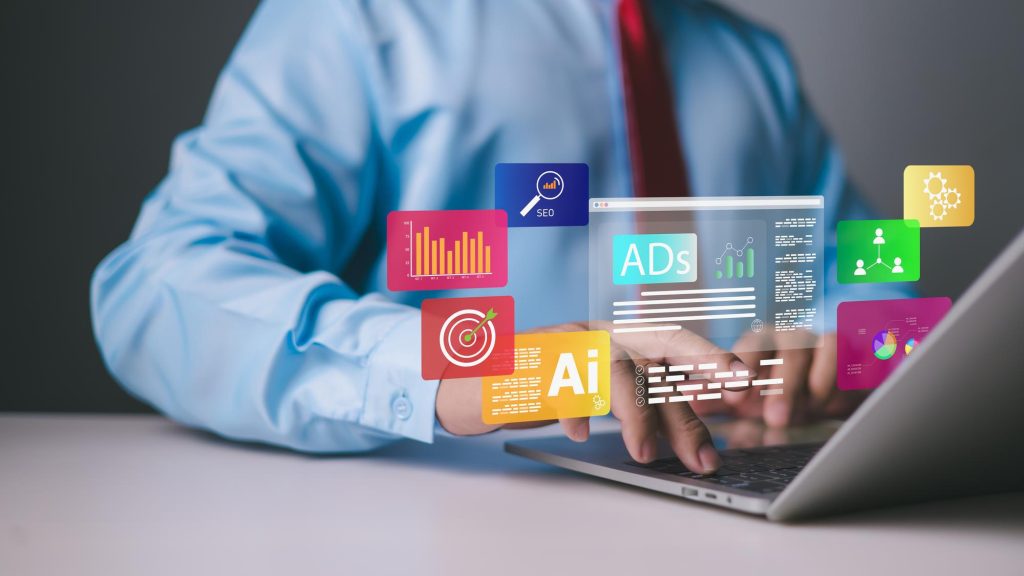Top Programmatic Media Buying Strategies for 2025
Programmatic advertising is no longer just about automation – it’s about intelligence. In 2025, the shift toward AI-powered, privacy-first programmatic media buying strategies is transforming how brands reach and engage with their audiences. To succeed, brands must adopt the right programmatic media buying strategies for 2025 that prioritize AI and first-party data.
While more than 73% of all digital display ad spend is now transacted programmatically, only a small percentage of marketers are fully leveraging the potential of machine learning, first-party data, and omnichannel orchestration. The result? A widening performance gap between fast-moving, AI-enabled brands and those stuck in 2018 playbooks.
If you’re looking to lead, not lag, this is the definitive guide to mastering programmatic media buying in 2025.
The State of Programmatic in 2025

Today’s programmatic platforms can process over 12 million bid requests per second, each decision guided by data, algorithms, and predictive intelligence. But the core principles have evolved beyond speed and scale.
Modern programmatic media buying is about:
- Personalization at scale
- Cross-channel intelligence
- Privacy-by-design architecture
- Real-time creative optimization
Simply put, the future belongs to brands that can combine data, automation, and creativity to deliver seamless customer experiences across touchpoints.
Why 2025 Is a Pivotal Year
Three powerful trends are converging:
1. The Death of Third-Party Cookies
Google’s full deprecation of cookies across Chrome means advertisers must now rethink targeting, measurement, and attribution from the ground up.
2. AI & ML Mainstreaming
AI is no longer experimental. Advertisers using AI-driven bidding strategies see up to 45% better CPA performance, and AI-generated creatives often outperform manual versions by double-digit margins.
3. Exploding Channel Complexity
CTV, digital out-of-home, programmatic audio, in-game ads, and retail media are growing fast. Coordinating campaigns across these formats requires smarter tools, not more spreadsheets.
The time to adapt is now.
Top Programmatic Media Buying Strategies for 2025

Below are the six essential strategies every performance-focused marketer must master.
1. AI & Machine Learning Campaign Mastery
The use of AI in programmatic advertising has moved far beyond bid optimization.
Advanced AI applications in 2025 include:
- Dynamic Budget Allocation: Algorithms adjust campaign budgets in real-time based on performance signals, market trends, and competitor activity. Some brands see 30% uplift in ROI by reallocating budgets hourly.
- Predictive Audience Targeting: AI models identify likely converters before they even signal intent. For example, a fitness brand may target users whose app usage, step count, and weather patterns suggest readiness to buy workout gear.
- Creative Intelligence Engines: Platforms like Meta’s Advantage+ and Google’s Performance Max now auto-generate and test thousands of ad variants, dynamically optimizing based on engagement, placements, and formats.
- AI Attribution Modeling: Instead of giving full credit to the last click, machine learning can now weigh each customer touchpoint—from email opens to podcast listens—to determine which channels drove conversions.
Result: Brands that integrate AI throughout their campaigns are seeing ROAS improvements of 50% or more, while reducing manual labor by up to 80%.
2. First-Party Data Activation in a Cookieless World
With the cookie era behind us, the most valuable asset is the data your audience willingly shares. Brands that harness first-party and zero-party data are gaining a competitive edge.
Winning strategies include:
- Zero-Party Data Collection: Use interactive tools – like product quizzes, loyalty programs, and gated content—to gather customer preferences. A skincare brand, for instance, can build rich profiles from quiz responses about skin type and goals.
- Behavioral Data Integration: Combine website activity, email behavior, past purchases, and mobile app data into a centralized customer view. This supports precise audience segmentation and message customization.
- Customer Data Platforms (CDPs): Sophisticated marketers are using CDPs like Segment or Tealium to unify data from disparate sources, enabling dynamic audience creation and journey orchestration.
- Data Clean Rooms: Retailers like Amazon, Target, and Walmart offer secure environments where brands can match their first-party data with partner audiences for enhanced targeting, while staying compliant.
First-party data campaigns consistently outperform cookie-based ones, often delivering 2–3x higher conversion rates and improved retention.
3. Omnichannel Orchestration Across CTV, Audio, and Retail
Consumers don’t live on one screen—neither should your ads. In 2025, effective campaigns must be orchestrated across multiple channels, with real-time feedback loops and creative adaptation.
Where to focus:
- Connected TV (CTV): With viewership overtaking linear TV, CTV is now a prime programmatic channel. Combining CTV with mobile retargeting can increase brand recall by 89%, especially when viewers are nudged to convert via a second screen.
- Programmatic Audio: Ads on Spotify, podcasts, and audio streaming apps are cost-effective and deeply engaging. Audio ads have 24% higher brand lift compared to display, and growing programmatic inventory means better scale.
- Retail Media Networks: Platforms like Amazon Ads, Walmart Connect, and Instacart are becoming critical for lower-funnel targeting. Many now offer real-time API access, allowing brands to adjust bids based on supply chain or inventory data.
- In-Game Advertising: The global gaming audience exceeds 3 billion. Programmatic placements in mobile and console games offer 95% viewability and native experiences that don’t interrupt gameplay.
Winning in 2025 means centralizing campaign data, aligning KPIs across platforms, and investing in creative versioning tailored to each environment.
4. Privacy-First and Cookieless Targeting Excellence
Regulations like GDPR, CPRA, and rising consumer awareness have made privacy-first advertising a must.
How privacy leaders are succeeding:
- Contextual Intelligence: AI tools like GumGum’s Verity analyze page content, sentiment, and keywords to match ads with relevant content—no user tracking needed.
- Cohort-Based Targeting: Using interest groups rather than individuals (e.g., Google’s Topics API), advertisers can still reach relevant audiences without collecting personal identifiers.
- Server-Side Tracking: Moving tracking from the browser to secure servers improves data quality and makes advertisers less reliant on third-party cookies. Brands using server-side GTM setups report 40% higher data fidelity.
- Consent Management: Advanced CMPs help brands design permission-based data strategies. Transparent opt-ins lead to more trust and, ironically, higher engagement.
This strategy isn’t just about compliance – it’s about performance and brand equity.
5. Real-Time Bidding 2.0: Smarter, Faster, Fairer
Real-time bidding (RTB) has matured into a new generation of smarter, more efficient systems.
Innovations in RTB 2.0 include:
- Unified Auctions: All formats – display, video, native – compete in a single auction, creating more competition and maximizing publisher revenue. This also increases advertiser efficiency by eliminating waterfall setups.
- Edge Computing: By processing bid decisions closer to the user, latency is reduced by up to 60%, enabling faster ad load times and improved user experience.
- Blockchain for Ad Verification: Companies like MadHive and Lucidity are using blockchain to authenticate impressions, track spend, and eliminate fraud, creating a transparent, auditable ad supply chain.
- Predictive Bidding Engines: Rather than reacting, algorithms now predict auction outcomes based on user profiles, publisher behavior, and historical campaign performance, driving higher win rates at lower CPMs.
These enhancements ensure advertisers are getting what they pay for, and publishers are fairly compensated.
6. Custom Algorithms & Predictive Intelligence
Top brands in 2025 are going beyond vendor tools by developing proprietary algorithms and analytics stacks.
Examples include:
- Customer Lifetime Value (CLV) Models: By evaluating potential LTV at the impression level, brands can dynamically bid more for users who are likely to stick around and buy again.
- Inventory Forecasting Models: These tools predict when and where ad inventory will be most effective, allowing for smarter planning and pacing.
- Competitive Intelligence Engines: AI tools that monitor competitors’ ad placements, spend trends, and creatives in real time—then adjust your strategy accordingly.
- Custom Attribution Models: Brands are replacing last-click attribution with models that include social shares, offline conversions, and even customer sentiment, providing a fuller view of ROI.
These tools are a major differentiator, especially in crowded verticals like ecommerce, finance, and travel.
How Brands Can Stay Ahead in 2025
To thrive in the new programmatic landscape, smart brands are:
- Investing in First-Party Infrastructure: Building or refining CDPs, clean rooms, and secure consent frameworks.
- Embracing AI as a Core Capability: Not just for bidding, but for creative, audience, and analytics automation.
- Testing Emerging Formats: Allocating 10–20% of the budget to experiment with new channels like retail media, DOOH, and VR ads.
- Focusing on Human-Centered Creative: Pairing data with storytelling to build trust and engagement.
The common thread? Agility, intelligence, and integration.

GeoSpot Media: Your Partner for Smarter Programmatic Buying
As one of Southeast Asia’s top independent trading desks, GeoSpot Media empowers brands to win with:
- Proprietary AI optimization engines
- Access to premium and exclusive programmatic inventory
- Cross-channel buying across CTV, mobile, display, audio, and retail
- Transparent reporting with real-time performance dashboards
From data strategy to execution, we help brands unlock next-level performance across every channel, device, and customer touchpoint.
Conclusion
The world of programmatic advertising in 2025 is faster, smarter, and more complex than ever. Brands that embrace AI-driven automation, leverage first-party data, and build privacy-resilient strategies will outpace competitors still clinging to outdated playbooks.
If you want to maximize media efficiency, drive conversion, and future-proof your marketing, the time to evolve is now.
Ready to transform your media buying for 2025?
Partner with GeoSpot Media to build smarter, faster, privacy-first programmatic campaigns that deliver real results.




Post Comment